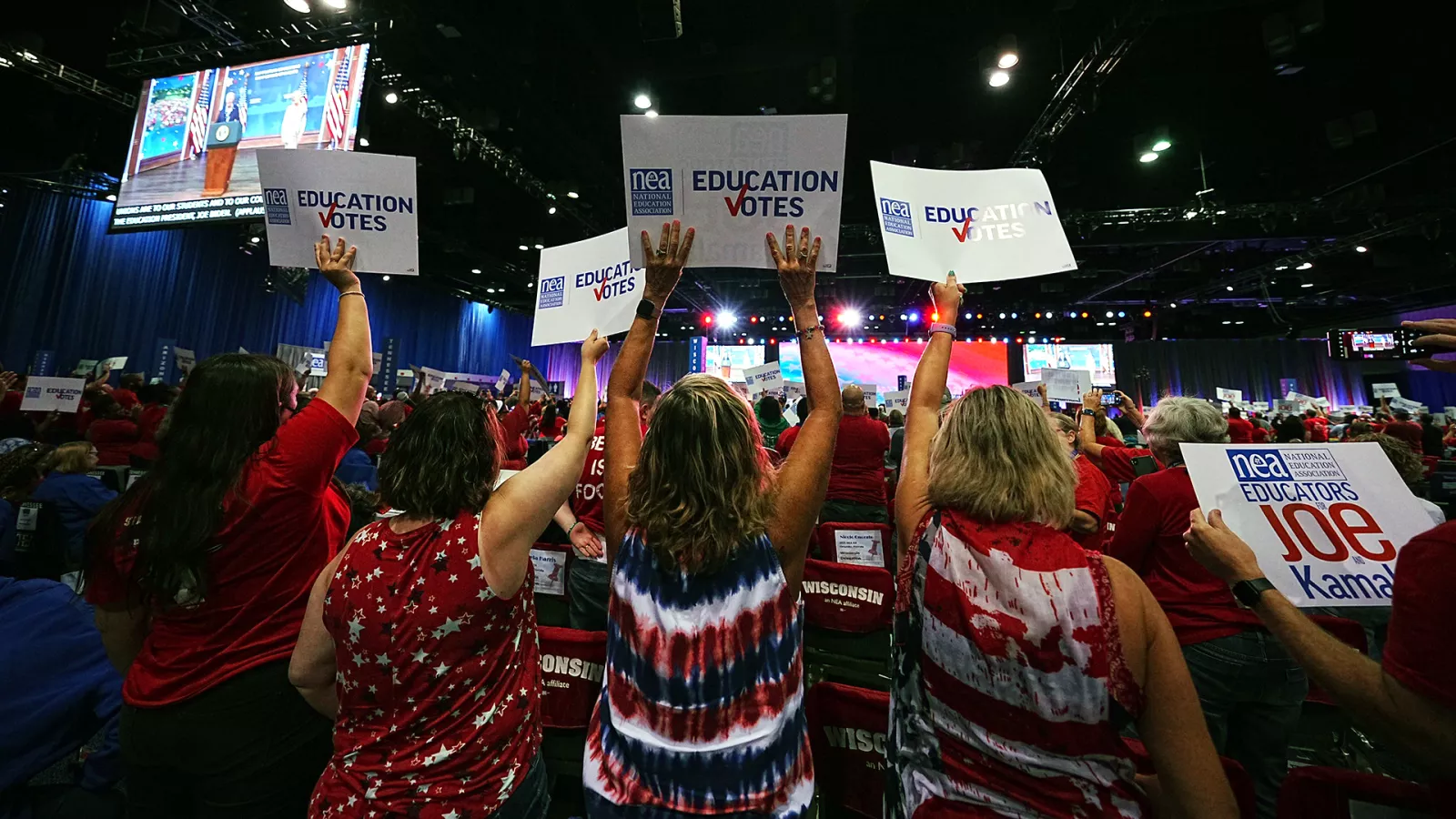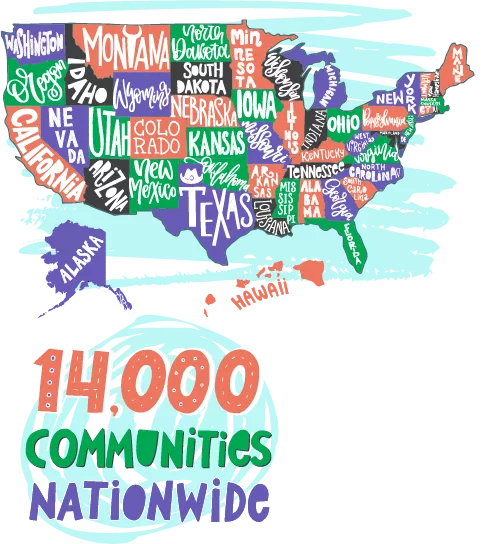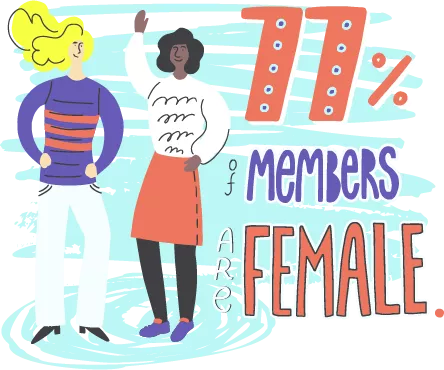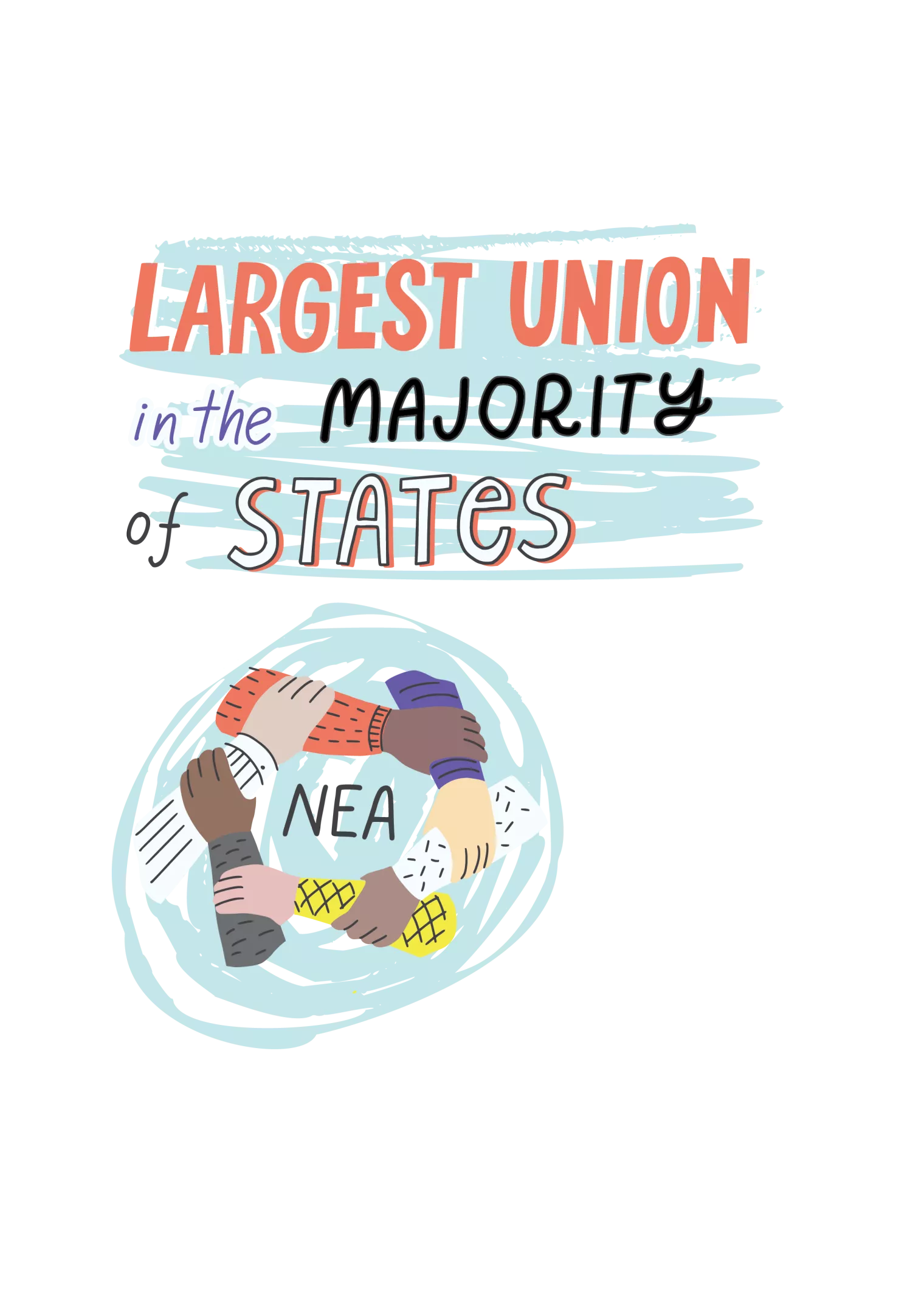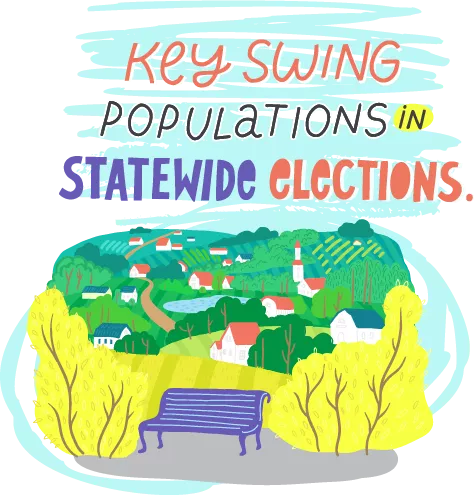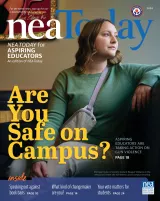1: Your Vote, Your Voice!
Aspiring Educators are headed to the polls this November to vote for candidates who support public education and unions.

“Education is already an undervalued profession,” says Emily Rubin, an elementary education major at Northern Arizona University, in Flagstaff. “We can’t afford to have policymakers that don’t support us.”
In recent years, young voters have had a major impact on who gets elected.
In the 2020 U.S. presidential election, a record turnout was driven by young voters who became of age to vote, according to the voter data firm Catalist.
In an election that was decided by only a few thousand votes in a handful of states, the youth vote was a decisive force in securing Joe Biden’s win over Donald Trump.
Biden is the most pro-public education and pro-union president in modern history. And this November, you have a chance to re-elect him as the president who will support you—and your students!
Beyond the White House
In Election 2024, it’s equally important to vote in local and state races. Here’s a look at how elected leaders at different levels of government can make or break your public schools.
Federal elections
U.S. senators and representatives determine education spending for critical programs that help reduce inequities in schools. They also set federal standards for education.
State elections
Governors can block harmful proposals, such as school voucher bills—which siphon money from public education to fund private schools. They can also change state education policies and programs through executive orders, executive budgets, and legislative proposals.
Your state senators and representatives impact every aspect of public schools, from funding and standardized testing to educators’ right to organize and advocate for their students.
State attorneys general can assemble task forces to examine school safety, bullying, and standardized testing.
School board
Your district’s school board makes key budget decisions about salaries and purchases of textbooks and technology. They also have the authority to hire and fire school administrators.
Electing pro-public school candidates to local school boards is essential to your day-to-day job.
2: Aspiring Educators Can Help Turn Out the Vote
College students turned out the vote in the 2018 and 2020 elections. They helped flip U.S. Senate seats and safeguarded pro-public education supporters in the U.S. House as well as in state and local elections. The wins were huge, and college students delivered a clear message: They value public schools and want leaders who will support and invest in them.
Educators are some of the most trusted voices in their communities. This applies to Aspiring Educators, too, who are leading critical work on college campuses nationwide in advance of the 2024 election. They’re organizing voter registration events and educating other students and community members about what’s at stake for public schools.
The collective strength of aspiring and active educators can make a significant impact on elections. Want to help turn out the vote on your campus? Follow these steps!
Follow these steps!
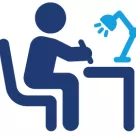



Confirm your voter registration today at EdVotes.org/Voter-Registration.
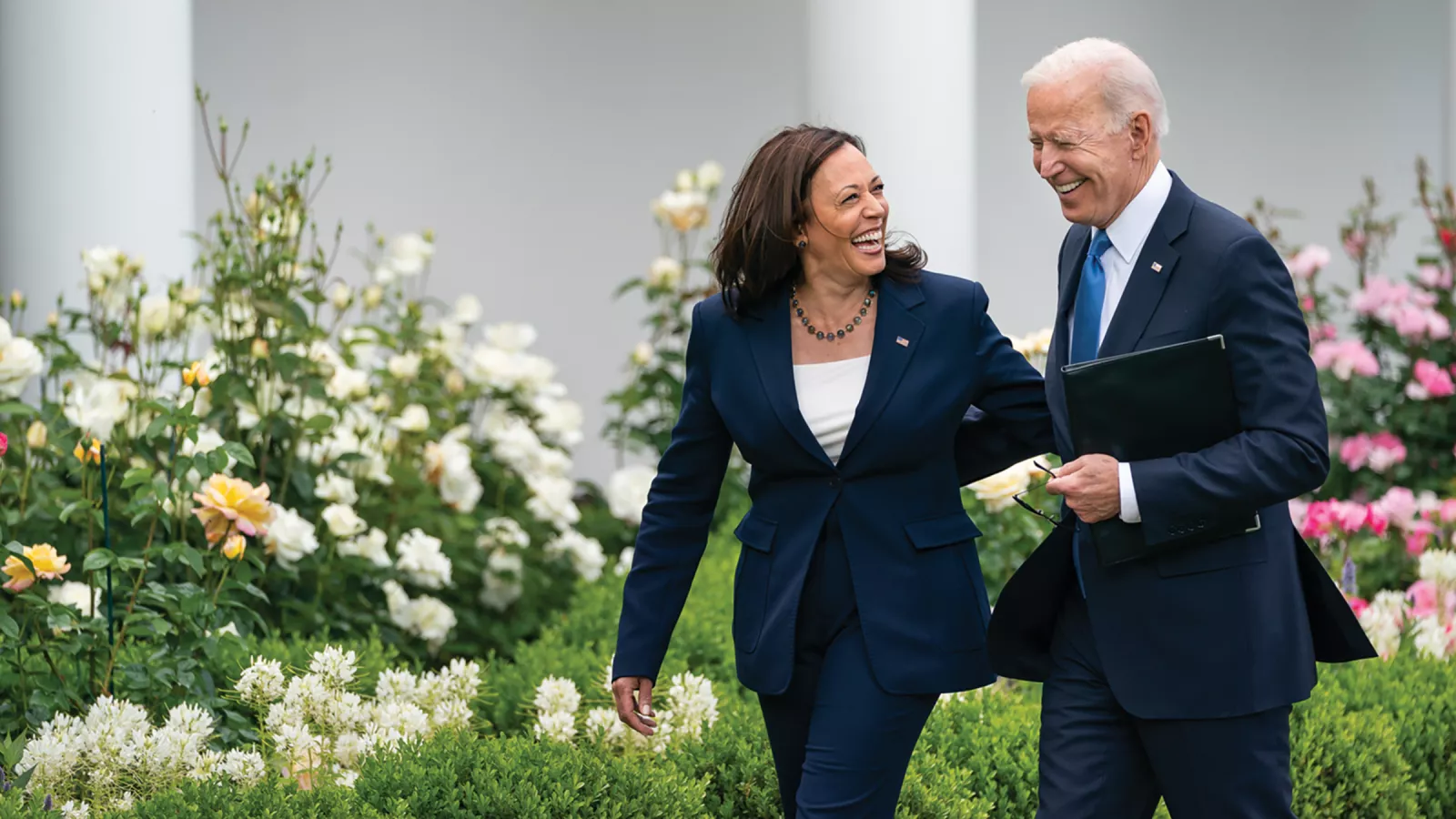
3: Joe Biden Stands Up for Educators
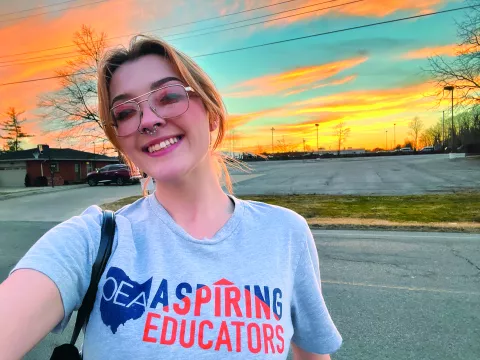
President Joe Biden and Vice President Kamala Harris have earned the trust of the 3 million member NEA. Why? Because they know what educators need and are tireless supporters of public education. The Biden administration has partnered with parents and educators to strengthen public schools and expand opportunities for all students.
”They’re setting up U.S. students to be successful members of society,” says Isabelle Ayala, an integrated language arts education major at Ashland University, in Ohio. “[Biden’s] efforts and his attitudes towards educators and labor show that he wants a better future … and he is aware of the power and the effectiveness of unions.”
Here’s why Joe Biden and Kamala Harris deserve your vote in Election 2024:
They delivered on student loan relief.
Last year, the Biden administration launched the Saving on a Valuable Education (SAVE) Plan, which calculates payments based on a borrower’s income and family size—not on their loan balance.
The Biden administration released data showing that nearly 5.5 million borrowers are now enrolled in SAVE, including 2.9 million who have payments of zero dollars. All other borrowers enrolled in SAVE are saving an estimated $102 a month ($1,224 a year) compared with what they would have paid previously.
That’s extra cash in Aspiring Educators’ pockets as they make their way into the workforce.
They expanded mental health care.
The departments of Labor, Treasury, and Health and Human Services together announced new rules that will ensure people have the same access to mental health services as they have to medical benefits.
Plus, in June 2022, Biden signed the Bipartisan Safer Communities Act, which brought the first meaningful gun law reform in 30 years and nearly $1 billion for mental health resources for schools.
They made historic investments in public education.
The Biden administration set aside nearly $170 billion in pandemic relief funds—the single largest federal investment in public schools. Biden’s American Rescue Plan also requires states to include educator unions as partners in determining how the funds are spent.
They support paid student teaching.
In August 2022, the Biden administration announced its support for Registered Apprenticeship Programs (RAPs), which provide more pathways to careers in education, with an emphasis on paid student teaching. So far, 21 RAPs for teaching have been created nationwide.
The Biden-Harris Record
Ensuring Student and Educator Health & Safety
Advancing Racial Equity
Protecting School Funding
Another Win for School Safety
Environmental Protections
Greener School Buses
Fairness for Pregnant Workers and Same-Sex and Interracial Marriages
Promoting Teacher Diversity
Moves to Protect Transgender Student Athletes
Promoting Opportunity and Diversity in Higher Education
Expanding Access to School Breakfast and Lunch Programs
Check out the complete "Biden-Harris Wins for Educators and Students" timeline at EdVotes.org/Biden.
4: As an NEA Member, You Have Voting Power
A Closer Look: NEA By the Numbers
5: Your Union Protects Democracy
How are public education and democracy connected? As the nation’s largest labor union, educators are building a movement that champions justice, protects and advances the progress we’ve made as a nation, and provides individuals with the skills to be involved, informed, and engaged citizens.
This makes educators and future educators critical to defending our freedoms: The freedom to love who you love; to read the books you want to read; to choose when to start a family or not start one at all; to worship when and where you want—or not at all; and the freedom to be heard in the workplace and at the ballot box. For example, according to a report from the Economic Policy Institute, states with a higher density of union members have fewer restrictive voting laws.
Shravani Williams, a secondary education in English major at Northern Arizona University, in Flagstaff, feels that the value of the union lies in our ability to take collective action on behalf of educators and students.
“Together, we are more powerful,” Williams says. “We all have a voice and shouldn’t be afraid to use it.”
And when educators come together, we can create meaningful change in schools and communities—and win for all students.
Quote byShravani Williams

Download graphics and messaging to share on your social media platforms. Go to EdVotes.org/Social-Media-Toolkit.

Get more from


